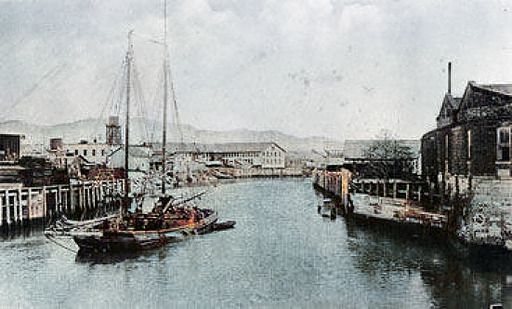Brief
History:
Francis Castro and Father
Jose Altimura were the first Europeans
to explore the Napa Valley, in 1823.
When the first white
settlers arrived in the early
1830s, there were six tribes in the
valley speaking different dialects and
they were often at war
with each other. The Mayacomos
tribe lived in the area where Calistoga
was founded. The Callajomans were in the
area near
where the town of St. Helena now
stands. Further south, the Kymus dwelt
in the middle part of the valley. The
Napa and
Ulcus tribes occupied part of the
area where the City of Napa now exists
while the Soscol tribe occupied the
portion that now
makes up the southern end of the
valley. Many of the native peoples died
during a smallpox epidemic in 1838.
Settlers also
killed several over claims of
cattle theft.
During the era between 1836 and
1846, when California was a province of
independent Mexico, the following 13
ranchos
were granted in Napa County:
Carne Humana
Catacula
Caymus
Chimiles
Entre Napa
Huichica
La Jota
Las Putas
Locoallomi
Mallacomes
Napa
Tulucay
Yajome
George C. Yount was an early
settler in Napa County and is believed
to be the first Anglo-Saxon resident in
the county. In
1836 Yount obtained the Mexican
grant Rancho Caymus where he built what
is said to be the first log house in
California.
Soon afterward, he built a sawmill
and grain mill, and was the first person
to plant a vineyard in the county.
Following
Yount's death in 1865 at age 71,
the town of Yountville was named in his
honor.
Following his marriage to General
Vallejo’s niece Maria Guadalupe
Soberanes, Edward Turner Bale became a
citizen of
Mexico and was granted Rancho
Carne Humana in the northern end of the
valley. Bale completed building the Bale
Grist
Mill a few miles north of St.
Helena in 1846. Colonel Joseph B. Chiles
a guide for one of the earliest
immigrant trains to
California, was granted Rancho
Catacula in 1844.
The Town of Napa was founded on
Rancho Entre Napa by Nathan Coombs in
1847.
Following the event of the
Mexican–American War, Bear Flag Revolt
in 1846 and the Mexican Cession in 1848,
settlers
were granted deeds from the
original ranchos during the 1850s
through 1870s. To this day, a number of
streets and landmarks
around the valley reflect the
names of these ranchos and original
grantees.
|



